Intelligent Anomaly Identification of Uplift Pressure Monitoring Data and Structural Diagnosis of Concrete Dam
Abstract
1. Introduction
2. Intelligent Anomaly Identification Model of Uplift Pressure
2.1. Principles of the DBSCAN
2.2. Anomaly Identification Model of Uplift Pressure Based on DBSCAN
- (1)
- Normalizing the monitoring data of upstream water level and uplift pressure of the concrete dam can fully reflect the monitoring data characteristics.
- (2)
- The DBSCAN algorithm is used to identify monitoring points of the uplift pressure one by one. According to the identification results, they are divided into normal and abnormal monitoring points. Repeat this step until all monitoring points of the uplift pressure have completed the anomaly identification.
- (3)
- Monitoring points are divided into two major types according to quantity and spatial distribution. One is individual or discontinuous distribution points, and another is multiple and continuous distribution points.
- (4)
- If an individual monitoring point is diagnosed as abnormal, or the spatial distribution of the abnormal monitoring point is not continuous, operating personnel should focus on checking whether the corresponding monitoring equipment is operating normally. Based on the inspection results, operating personnel determine whether to carry out the structural diagnosis of the concrete dam.
- (5)
- If multiple monitoring points are diagnosed as abnormal, and the spatial distribution of the abnormal monitoring points is relatively continuous, operating personnel should focus on the changes in the structural behavior. The structural diagnosis is carried out for the concrete dam under abnormal uplift pressure.
- (6)
- According to the above analysis, we can clarify the abnormal conditions of uplift pressure and its influence on the structural behavior, which can guide the later operation, management, and maintenance of the concrete dam.
3. Measured Uplift Pressure Application Method and Software Development
- (1)
- All kinds of essential data are inputted, including the upstream water level, the shape, and elevation of dam foundation surface, the coordinate of drainage pipe, the coordinate of integration points of foundation surface in finite element model, and other necessary data.
- (2)
- Influenced by the actual topography, the foundation surface’s boundary and the drainage pipe’s position line, formed by the intersection of the dam body and dam foundation, are irregular. To facilitate the positioning calculation of integration points, it is necessary to construct the fitting curve equation of the boundary and the position. Through different projects, the quartic polynomial shows a better-fit effect to meet the needs of subsequent calculation.
- (3)
- Selecting an integration point of an element in the FEM model, the relationship between the integration point and the water level is judged. If this integration point is below the water level, the following calculation step is to proceed. Otherwise, the uplift force of this integration point is set equal to zero.
- (4)
- The positional relationship between the integration point and the drainage pipe is judged and divided into the upstream and the downstream integration point. Then, to determine the position of the integration point in the cross-section, the inner normal between the integration point and the foundation boundary is searched, of which the slope, distance, and foot of a perpendicular are calculated. The same operation should carry out for the integration point and the drainage pipe curve.
- (5)
- According to the measured uplift pressure and the position of the integration point in the cross-section, the uplift pressure at the integration point is calculated by interpolation.
- (6)
- The applying method judges whether all the current element’s integration points have finished the uplift pressure calculation. If not, steps (2) to (5) are repeated.
- (7)
- The applying method judges whether all FEM elements on the foundation surface have completed uplift pressure calculation. If not, steps (2) to (6) are repeated.
- (8)
- According to the interface requirements of the FEM, the measured uplift pressure of each integration point is output. The uplift pressure is called when the FEM simulation is carried out.
4. Case Study
4.1. Project Overview
4.2. Anomaly Identification of Uplift Pressure
4.3. Abnormal Uplift Pressure Applied in the FEM Model
4.4. Structural Diagnosis of the Arch Dam under Abnormal Uplift Pressure
- (1)
- Stress analysis of arch dam
- (2)
- Deformation analysis of arch dam
5. Conclusions
- (1)
- An intelligent anomaly identification model of uplift pressure, based on DBSCAN, is constructed. Because the uplift pressure is closely related to the reservoir water level, the DBSCAN can precisely identify the monitoring data clustering of the uplift pressure in the normal and the abnormally stable state. Therefore, the Density-based clustering methods, such as the DBSCAN, have good applicability for the identification of abnormal uplift pressure data.
- (2)
- There is still no unified understanding of applying the lifting pressure in the FEM, but the analysis of the structural behavior of concrete dams is partially safe with the face force application method. Then, a measured uplift pressure application method is proposed to accurately reflect the spatial distribution and abnormal position of uplift pressure. Meanwhile, self-written software is compiled, enabling users to complete the uplift pressure application quickly.
- (3)
- Comparing the structural behavior, under the designed and measured uplift pressure, the influence extent and scope of abnormal uplift pressure on the concrete dam is clear. For those reservoirs that cannot be stopped immediately and thoroughly, the safety of concrete dams is evaluated accurately and reasonably using this method, which is of great significance to ensure the project’s safety and maximize the social benefits.
Author Contributions
Funding
Institutional Review Board Statement
Informed Consent Statement
Data Availability Statement
Acknowledgments
Conflicts of Interest
References
- Hanna, A.W.; Plewes, H.D.; Wong, R.; Seyers, W.C. Investigations of high uplift pressures beneath a concrete dam. Can. Geotech. J. 1993, 30, 974–990. [Google Scholar] [CrossRef]
- Li, B.; Yang, J.; Hu, D.X. Dam monitoring data analysis methods: A literature review. Struct. Control Health Monit. 2020, 27, e2501.1–e2501.14. [Google Scholar] [CrossRef]
- Kang, F.; Li, J.; Xu, Q. Structural inverse analysis by hybrid simplex artificial bee colony algorithms. Comput. Struct. 2009, 87, 861–870. [Google Scholar] [CrossRef]
- Le, J.L. Size effect on reliability indices and safety factors of quasibrittle structures. Struct. Saf. 2015, 52, 20–28. [Google Scholar] [CrossRef]
- Zhang, G.D. Seepage pressure of concrete gravity dam. J. Hydraul. Eng. ASCE 1956, 1, 59–70. (In Chinese) [Google Scholar]
- Pereira, R.; Batista, A.L.; Neves, L.C.; Casaca, J.M. A priori uplift pressure model for concrete dam foundations based on piezometric monitoring data. Struct. Infrastruct. Eng. 2020, 17, 1523–1534. [Google Scholar] [CrossRef]
- Rochon-Cyr, M.; Leger, P. Shake table sliding response of a gravity dam model including water uplift pressure. Eng. Struct. 2009, 31, 1625–1633. [Google Scholar] [CrossRef]
- Plizzari, G.A. On the influence of uplift pressure in concrete gravity dams. Eng. Fract. Mech. 1998, 59, 253–267. [Google Scholar] [CrossRef]
- Pekau, O.A.; Zhu, X.Y. Effect of seismic uplift pressure on the behavior of concrete gravity dams with a penetrated crack. J. Eng. Mech. 2008, 134, 991–999. [Google Scholar] [CrossRef]
- Alliard, P.M.; Leger, P. Earthquake safety evaluation of gravity dams considering aftershocks and reduced drainage efficiency. J. Eng. Mech. 2008, 134, 12–22. [Google Scholar] [CrossRef]
- Javanmardi, F.; Leger, P.; Tinawi, R. Seismic structural stability of concrete gravity dams considering transient uplift pressures in cracks. Eng. Struct. 2005, 27, 616–628. [Google Scholar] [CrossRef]
- Mostafaei, H.; Gilani, M.S.; Ghaemian, M. Stability analysis of arch dam abutments due to seismic loading. Sci. Iran 2017, 24, 467–475. [Google Scholar] [CrossRef][Green Version]
- Liu, X.; Wang, S.; Wang, E. A study on the uplift mechanism of Tongjiezi dam using a coupled hydro-mechanical model. Eng. Geol. 2011, 117, 134–150. [Google Scholar] [CrossRef]
- Ganji, H.T.; Alembagheri, M. Stability of monolithic gravity dam located on heterogeneous rock foundation. Arab. J. Sci. Eng. 2017, 43, 1–17. [Google Scholar] [CrossRef]
- Chen, J.Y.; Zhang, L.; Chen, Y.A.; Yang, B.Q.; Ding, Z.L. Equivalent method for Simulating Uplift Pressure in dam model test. Adv. Struct. Eng. 2010, 13, 1063–1073. [Google Scholar] [CrossRef]
- Fu, C.J.; Yao, X.W.; Li, T.; Shen, H.Y.; Wang, Z.Y.; Jiang, J.Q. Investigation and evaluation of increasing uplift pressure in an arch dam: A case study of the Huaguangtan Dam. KSCE J. Civ. Eng. 2014, 18, 1858–1867. [Google Scholar] [CrossRef]
- Shu, H.H.; Zhou, Y.M. Coupling analysis of stress and seepage in unsaturated porous media. Water Conserv. Sci. Technol. Econ. 2017, 23, 20–23. (In Chinese) [Google Scholar]
- Ghorbani, M.; Sharifzadeh, M. Long term stability assessment of siah bisheh powerhouse cavern based on displacement back analysis method. Tunn. Undergr. Space Technol. 2009, 24, 574–583. [Google Scholar] [CrossRef]
- Salazar, F.; Conde, A.; Irazabal, J.; Vicente, D.J. Anomaly Detection in Dam Behaviour with Machine Learning Classification Models. Water. 2021, 13, 2387. [Google Scholar] [CrossRef]
- Zhu, S.Y.; Li, Y.L.; Lu, X.; Liu, K.X. Study on anomaly identification method for security monitoring data based on membership cloud. Yangtze River 2021, 52, 197–200. (In Chinese) [Google Scholar]
- Hu, J.; Ma, F.H.; Wu, S.H. Anomaly identification of foundation uplift pressures of gravity dams based on DTW and LOF. Struct. Control Health Monit. 2018, 25, e2153. [Google Scholar] [CrossRef]
- Hu, J.; Ma, F.H. Comprehensive investigation method for sudden increases of uplift pressures beneath gravity dams: Case study. J. Perform. Constr. Facil. 2016, 30, 04016023. [Google Scholar] [CrossRef]
- Park, C.M. Dam sensor outlier detection using mixed prediction model and supervised learning. Int. J. Adv. Smart Converg. 2018, 7, 24–32. [Google Scholar]
- Li, X.; Li, Y.L.; Lu, X.; Wang, Y.F.; Zhang, H.; Zhang, P. An online anomaly recognition and early warning model for dam safety monitoring data. Struct. Health Monit. 2020, 19, 796–809. [Google Scholar] [CrossRef]
- Salazar, F.; Toledo, M.A.; Gonzalez, J.M.; Onate, E. Early detection of anomalies in dam performance: A methodology based on boosted regression trees. Struct. Control Health Monit. 2017, 24, e2012. [Google Scholar] [CrossRef]
- Su, Y.; Weng, K.L.; Lin, C.; Chen, Z.Q. Dam deformation interpretation and prediction based on a long short-term memory model coupled with an attention mechanism. Appl. Sci. 2021, 11, 6625. [Google Scholar] [CrossRef]
- Cheng, L.; Zheng, D.J. Two online dam safety monitoring models based on the process of extracting environmental effect. Adv. Eng. Softw. 2013, 57, 48–56. [Google Scholar] [CrossRef]
- Li, X.; Wen, Z.P.; Su, H.Z. An approach using random forest intelligent algorithm to construct a monitoring model for dam safety. Eng. Comput. 2021, 37, 39–56. [Google Scholar] [CrossRef]
- Zhu, K.; Gu, C.S.; Qiu, J.C.; Li, H. The analysis of the concrete gravity dam’s foundation uplift pressure under the function of typhoon. Math. Probl. Eng. 2016, 2016, 1–9. [Google Scholar] [CrossRef]
- Granrut, M.D.; Simon, A.; Dias, D. Artificial neural networks for the interpretation of piezometric levels at the rock-concrete interface of arch dams. Eng. Struct. 2019, 178, 616–634. [Google Scholar] [CrossRef]
- Ester, M.; Kriegel, H.P.; Sander, J.; Xu, X.W. A density-based algorithm for discovering clusters in large spatial databases with noise. AAAI Press 1996, 96, 226–231. [Google Scholar]
- Lee, H.T.; Lee, J.S.; Yang, H.; Cho, I.S. An ais data-driven approach to analyze the pattern of ship trajectories in ports using the dbscan algorithm. Appl. Sci. 2021, 11, 799. [Google Scholar] [CrossRef]
- Ijaz, M.F.; Alfian, G.; Syafrudin, M.; Rhee, J. Hybrid prediction model for type 2 diabetes and hypertension using dbscan-based outlier detection, synthetic minority over sampling technique (smote), and random forest. Appl. Sci. 2018, 8, 1325. [Google Scholar] [CrossRef]
- Saiz-Manzanares, M.C.; Rodriguez-Diez, J.J.; Diez-Pastor, J.F.; Rodriguez-Arribas, S.; Marticorena-Sanchez, R.; Ji, Y.P. Monitoring of student learning in learning management systems: An application of educational data mining techniques. Appl. Sci. 2021, 11, 2677. [Google Scholar] [CrossRef]
- Li, S.; Pan, J.W.; Luo, G.H.; Wang, J.T. Automatic modal parameter identification of high arch dams: Feasibility verification. Earthq. Eng. Eng. Vib. 2020, 19, 953–965. [Google Scholar] [CrossRef]
- Askari, S. Fuzzy c-means clustering algorithm for data with unequal cluster sizes and contaminated with noise and outliers: Review and development. Expert Syst. Appl. 2021, 165, 113856. [Google Scholar] [CrossRef]
- Liu, X.; Ding, Y.; Tang, H.; Xiao, F. A data mining-based framework for the identification of daily electricity usage patterns and anomaly detection in building electricity consumption data. Energy Build. 2021, 231, 110601. [Google Scholar] [CrossRef]
- Cheng, Z.F.; Wang, X.L.; Ren, B.T.; Lv, P.; Zhu, X.B. Simulation of complex seepage field of a gravity dam foundation using a CFD-based approach. J. Hydraul. Eng. 2018, 144, 05018001. [Google Scholar] [CrossRef]
- Heidarzadeh, M.; Mirghasemi, A.A.; Niroomand, H. Construction of relief wells under artesian flow conditions at dam toes: Engineering experiences from Karkheh earth dam, Iran. Int. J. Civ. Eng. 2015, 13, 73–80. [Google Scholar]
- BAO, T.F.; Gu, C.S.; Wu, Z.R. Analysis of uplift pressure anomaly of Lijiaxia dam foundation. Chin. J. Geotech. Eng. 2008, 30, 1460–1466. (In Chinese) [Google Scholar]
- Saberhosseini, S.E.; Keshavarzi, R.; Ahangari, K. A fully coupled numerical modeling to investigate the role of rock thermo-mechanical properties on reservoir uplifting in steam assisted gravity drainage. Arab. J. Geoences 2017, 10, 1–10. [Google Scholar] [CrossRef]
- Gan, L.; Shen, Z.Z.; Wang, R.; Huang, Q.F. Stress-seepage fully coupling model for high arch dam. Appl. Mech. Mater. 2014, 513, 4025–4029. [Google Scholar] [CrossRef]
- Roth, S.N.; Leger, P.; Soulaimani, A. Fully-coupled hydro-mechanical cracking using xfem in 3d for application to complex flow in discontinuities including drainage system. Comput. Meth. Appl. Mech. Eng. 2020, 370, 113282. [Google Scholar] [CrossRef]
- Li, M.C.; Guo, X.Y.; Shi, J.; Zhu, Z.B. Seepage and stress analysis of anti-seepage structures constructed with different concrete materials in an RCC gravity dam. Water Sci. Eng. 2015, 8, 326–334. [Google Scholar] [CrossRef]
- Lin, J.Y. Hydraulic Building, 5th ed.; China Water & Power Press: Beijing, China, 2009. (In Chinese) [Google Scholar]
- Peng, Y.F. Calculation and control of seepage of hardfill dam with different foundation. Adv. Mater. Res. 2011, 255, 3666–3670. [Google Scholar] [CrossRef]
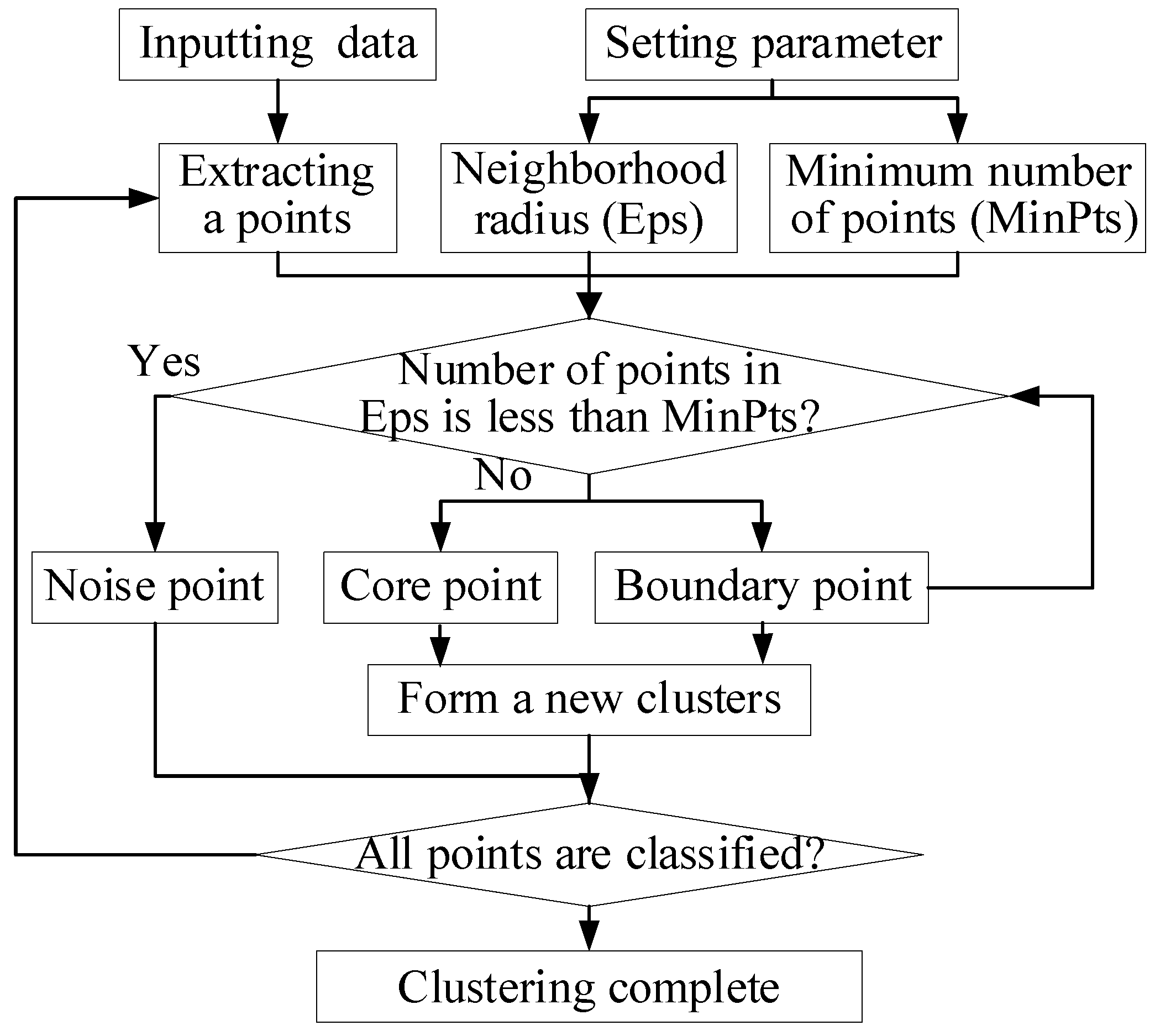
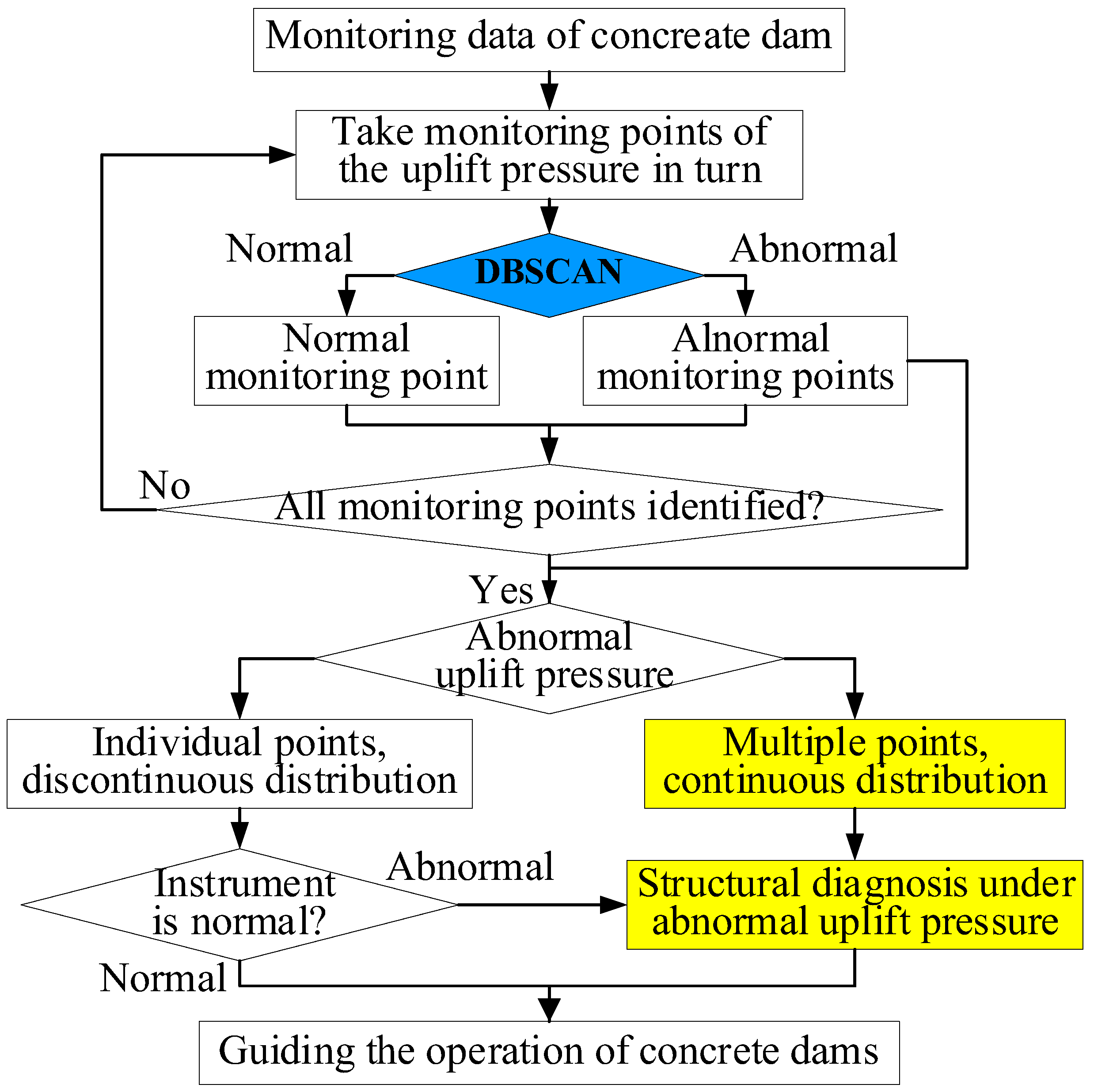
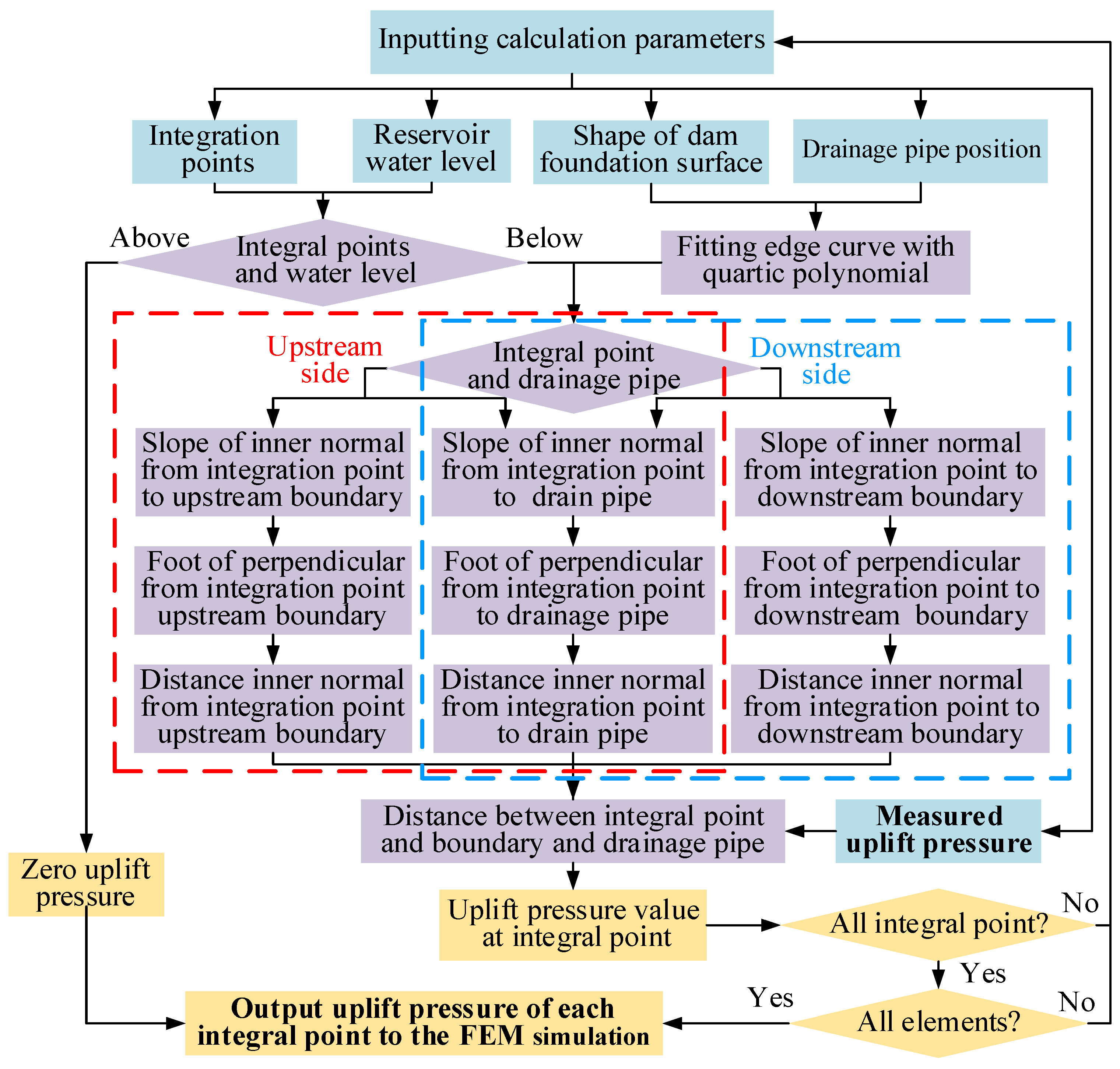



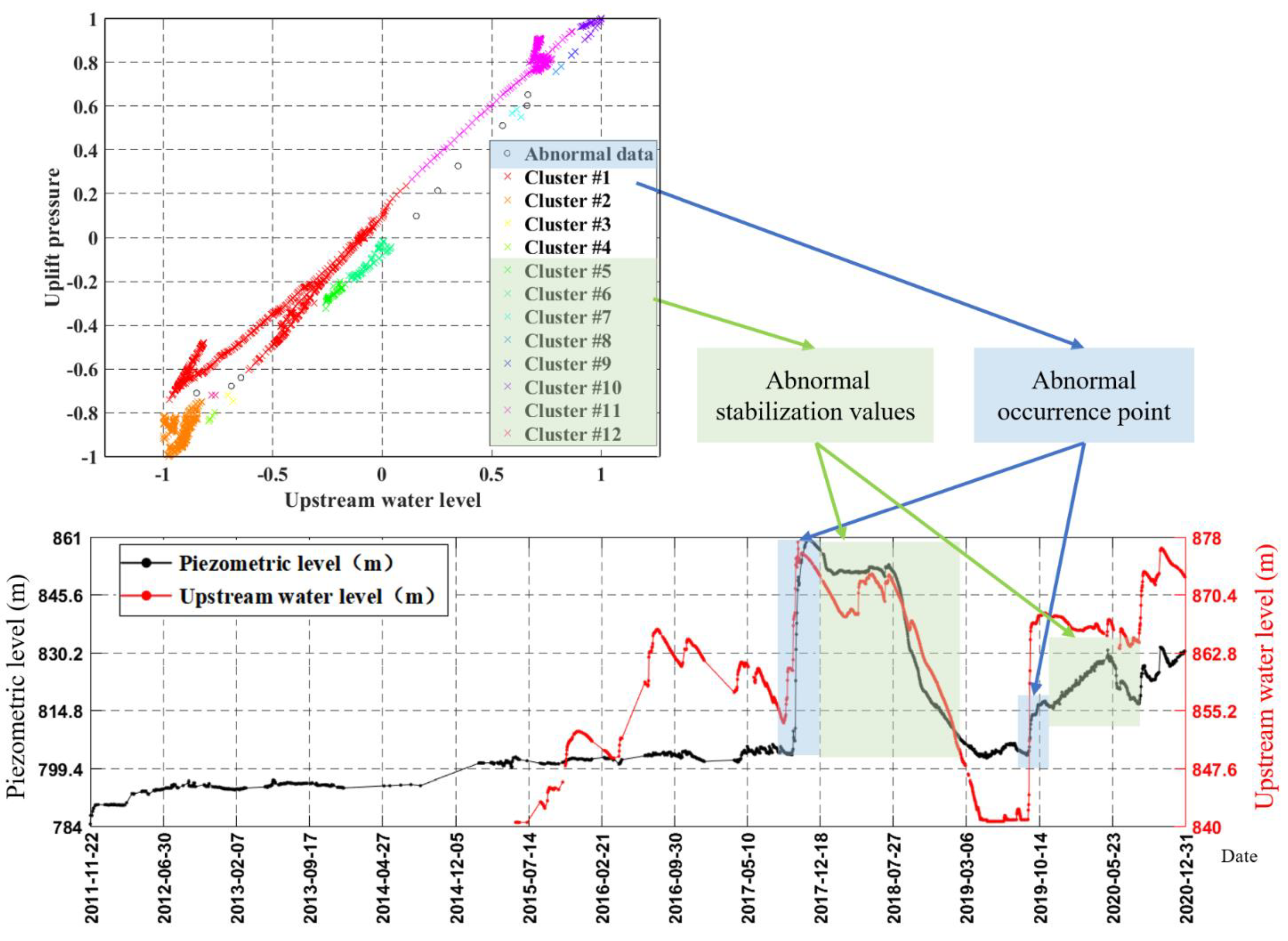

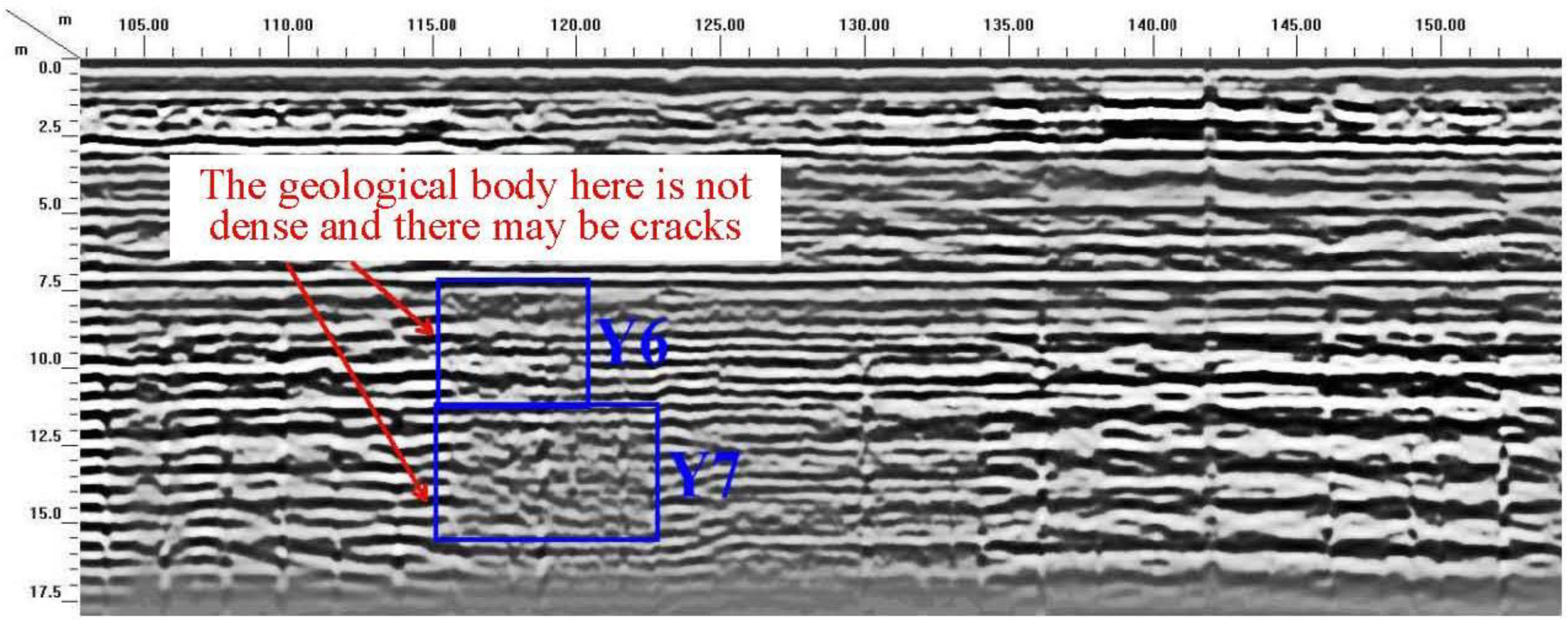

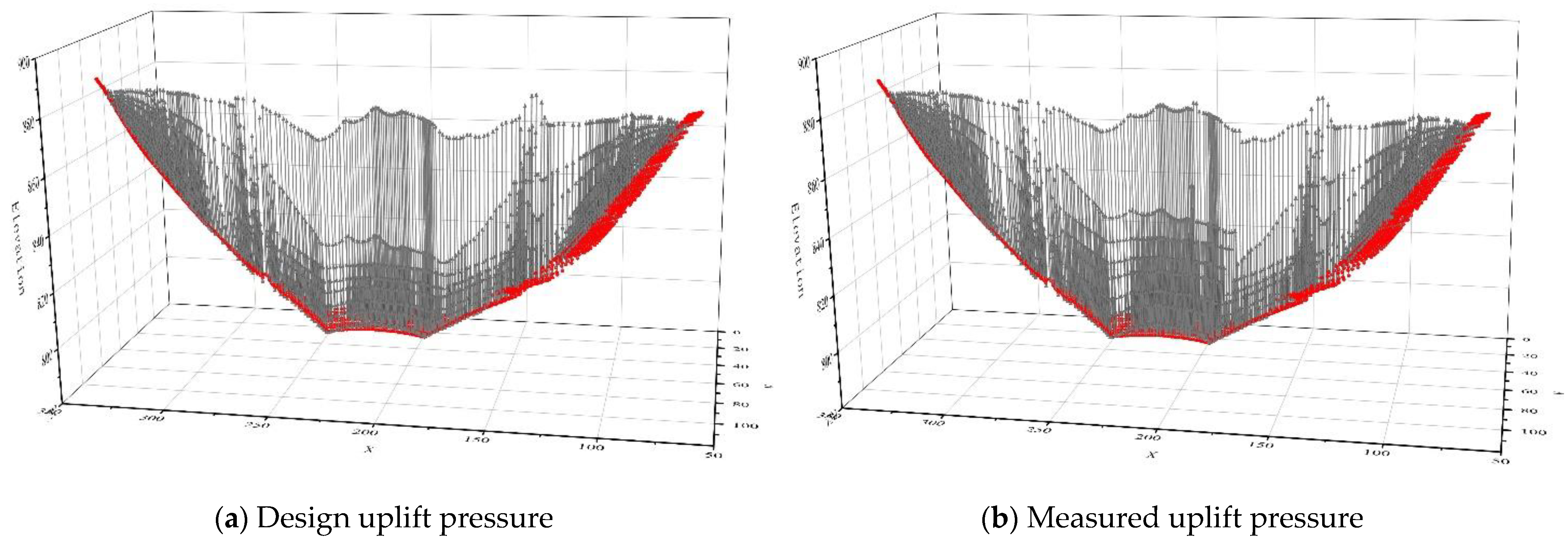

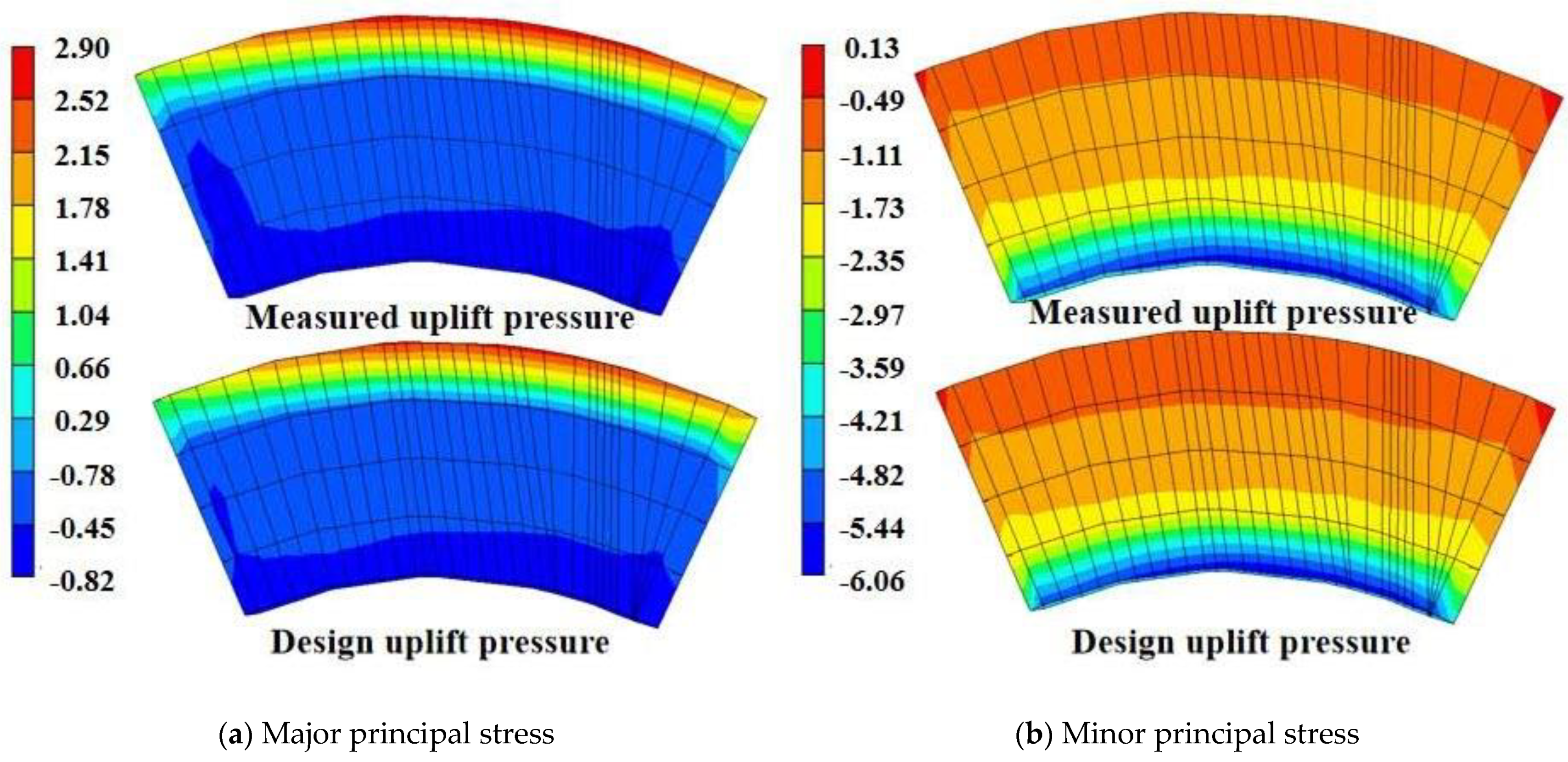
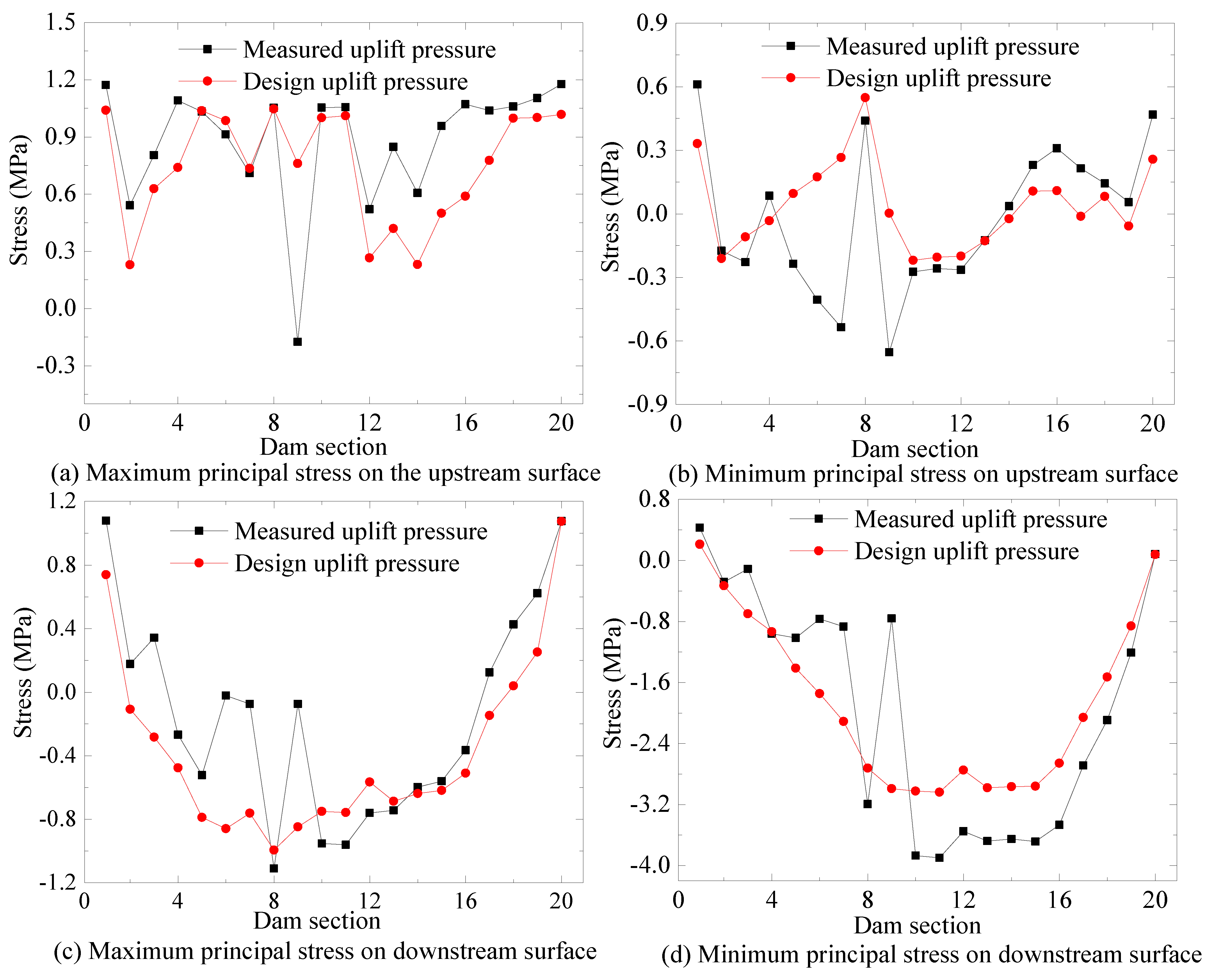
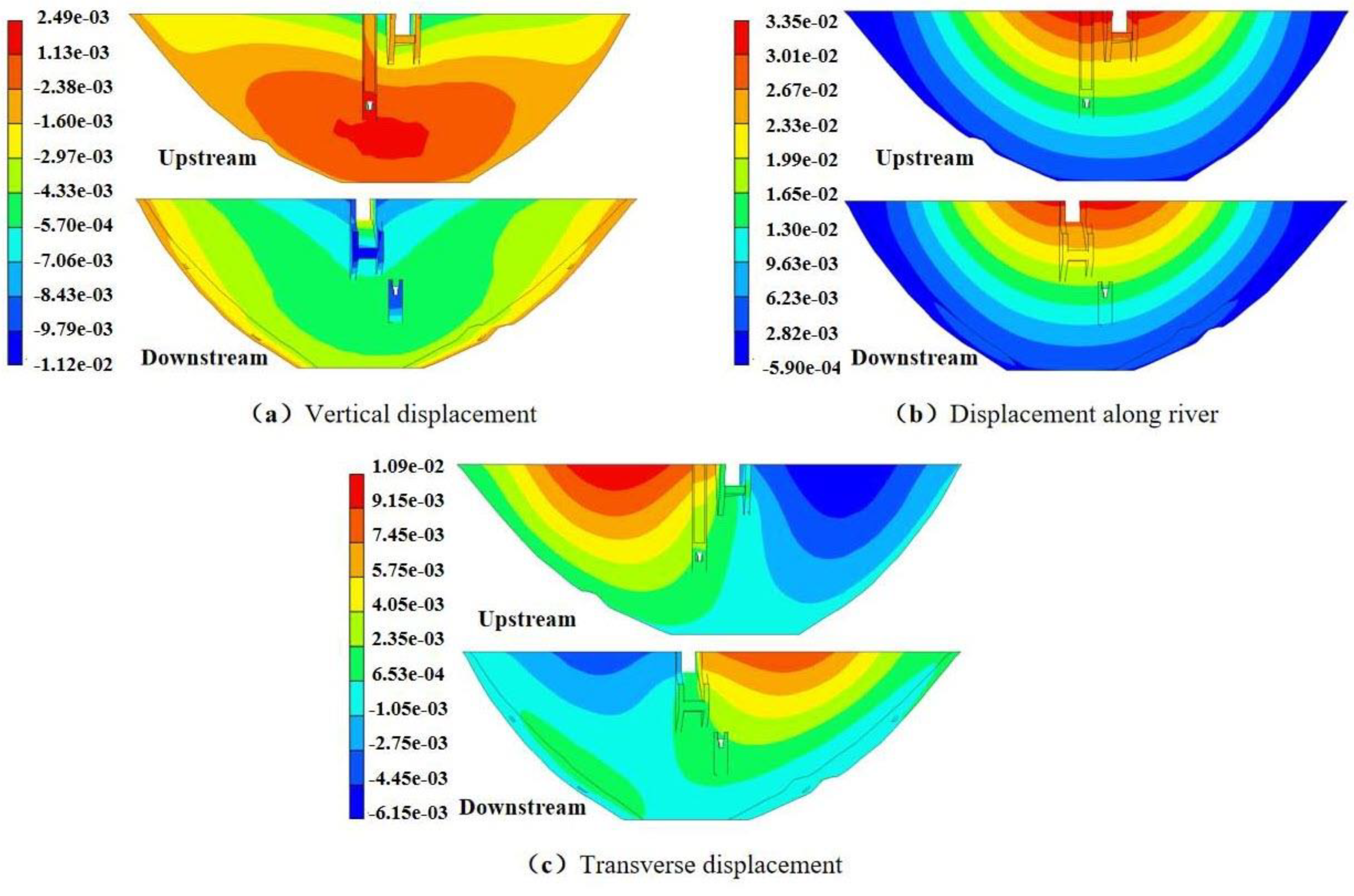
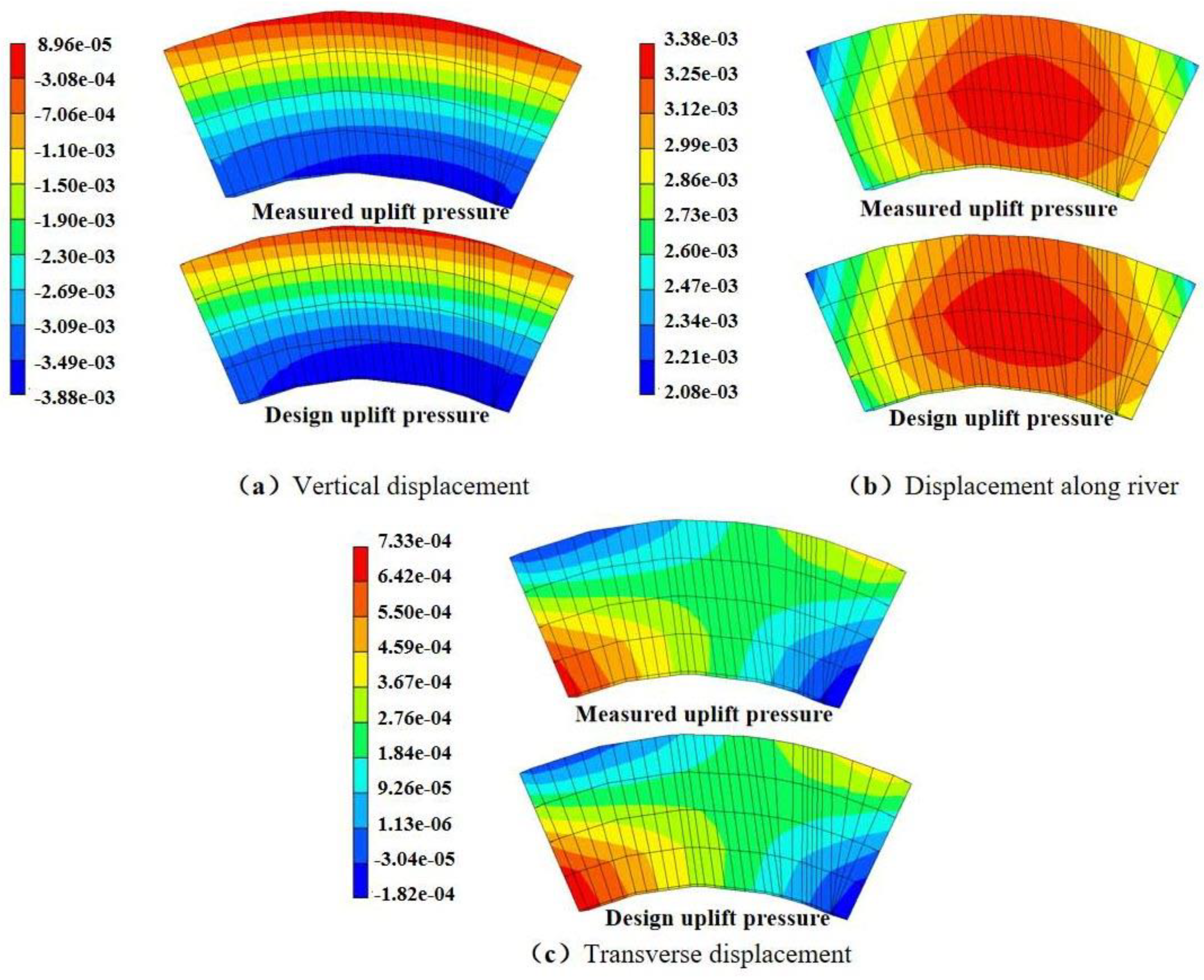
| Application Method | Assumption | Problems |
|---|---|---|
| Face force | Compared with the rock foundation with cracks and joints, the permeability coefficient of concrete is several small orders of magnitude. So the seepage pressure not far from the concrete facing water surface will quickly decay. The uplift pressure is mainly concentrated on the concrete surface [38]. | There is a gap between the assumption that the concrete permeability coefficient is minimal and the actual situation. |
| Body force | The concrete and rock mass are both water-permeable materials. After the formation of stable seepage, the infiltration line of the gravity dam body adopts the uplift pressure distribution curve. The uplift pressure is applied by using the submerged unit weight of the concrete below the infiltration line [2]. | The treatment with different unit weight lacks a theoretical, which is not applicable to arch dams [38]. |
| Seepage field | The seepage field of the foundation is obtained in advance, so the uplift pressure on the foundation surface can be calculated to apply to the dam calculation model [39]. The denser the distribution of equal headlines on the impervious curtain and sliding surface, the greater the seepage pressure [40]. | The seepage field of the foundation-dam should be calculated separately. |
| Fluid-solid coupling | Through clarifying the interaction mechanism between seepage and stress field, the impervious curtain studies the fluid-solid coupling mechanism of the foundation-dam [41]. Through the FEM, the stress field, displacement field [42], and seepage field [43] of the foundation-dam can be obtained simultaneously. | Multi-field coupling calculation has a large workload and complex mechanism [44]. |
| Density (kN/m3) | Modulus of Elasticity (GPa) | Poisson Ratio | Coefficient of Linear Extensibility (/°C) | |
|---|---|---|---|---|
| Dam concrete | 24 | 20 | 0.167 | 0.83 × 10−5 |
| Foundation above 865 m elevation | 27 | 10 | 0.27 | 1 × 10−5 |
| Foundation below 865 m elevation | 27 | 15 | 0.21 | 1 × 10−5 |
| Major Principal Stress | Minor Principal Stress | ||||
|---|---|---|---|---|---|
| Dam | Foundation in Riverbed | Dam | Foundation in Riverbed | ||
| Design uplift pressure | Maximum | 8.44 | 2.73 | 0.70 | 0.11 |
| Minimum | −1.51 | −0.82 | −9.10 | −6.06 | |
| Measured uplift pressure | Maximum | 8.37 | 2.90 | 0.69 | 0.13 |
| Minimum | −1.50 | −0.81 | −9.05 | −5.97 | |
| Vertical Displacement | Displacement along River | Transverse Displacement | |||||
|---|---|---|---|---|---|---|---|
| Dam | Foundation in Riverbed | Dam | Foundation in Riverbed | Dam | Foundation in Riverbed | ||
| Design uplift pressure | Maximum | 2.28 × 10−3 | −1.27 × 10−4 | 3.32 × 10−2 | 3.38 × 10−3 | 1.10 × 10−2 | 7.33 × 10−4 |
| Minimum | −1.13 × 10−2 | −3.89 × 10−3 | −6.05 × 10−4 | 2.08 × 10−3 | −6.17 × 10−3 | −1.70 × 10−4 | |
| Measured uplift pressure | Maximum | 2.49 × 10−3 | 8.96 × 10−5 | 3.33 × 10−2 | 3.37 × 10−3 | 1.09 × 10−2 | 7.08 × 10−4 |
| Minimum | −1.12 × 10−2 | −3.71 × 10−3 | −5.96 × 10−4 | 2.05 × 10−3 | −6.15 × 10−3 | −1.82 × 10−4 | |
Publisher’s Note: MDPI stays neutral with regard to jurisdictional claims in published maps and institutional affiliations. |
© 2022 by the authors. Licensee MDPI, Basel, Switzerland. This article is an open access article distributed under the terms and conditions of the Creative Commons Attribution (CC BY) license (https://creativecommons.org/licenses/by/4.0/).
Share and Cite
Ma, C.; Zhao, T.; Li, G.; Zhang, A.; Cheng, L. Intelligent Anomaly Identification of Uplift Pressure Monitoring Data and Structural Diagnosis of Concrete Dam. Appl. Sci. 2022, 12, 612. https://doi.org/10.3390/app12020612
Ma C, Zhao T, Li G, Zhang A, Cheng L. Intelligent Anomaly Identification of Uplift Pressure Monitoring Data and Structural Diagnosis of Concrete Dam. Applied Sciences. 2022; 12(2):612. https://doi.org/10.3390/app12020612
Chicago/Turabian StyleMa, Chunhui, Tianhao Zhao, Gaochao Li, Anan Zhang, and Lin Cheng. 2022. "Intelligent Anomaly Identification of Uplift Pressure Monitoring Data and Structural Diagnosis of Concrete Dam" Applied Sciences 12, no. 2: 612. https://doi.org/10.3390/app12020612
APA StyleMa, C., Zhao, T., Li, G., Zhang, A., & Cheng, L. (2022). Intelligent Anomaly Identification of Uplift Pressure Monitoring Data and Structural Diagnosis of Concrete Dam. Applied Sciences, 12(2), 612. https://doi.org/10.3390/app12020612








